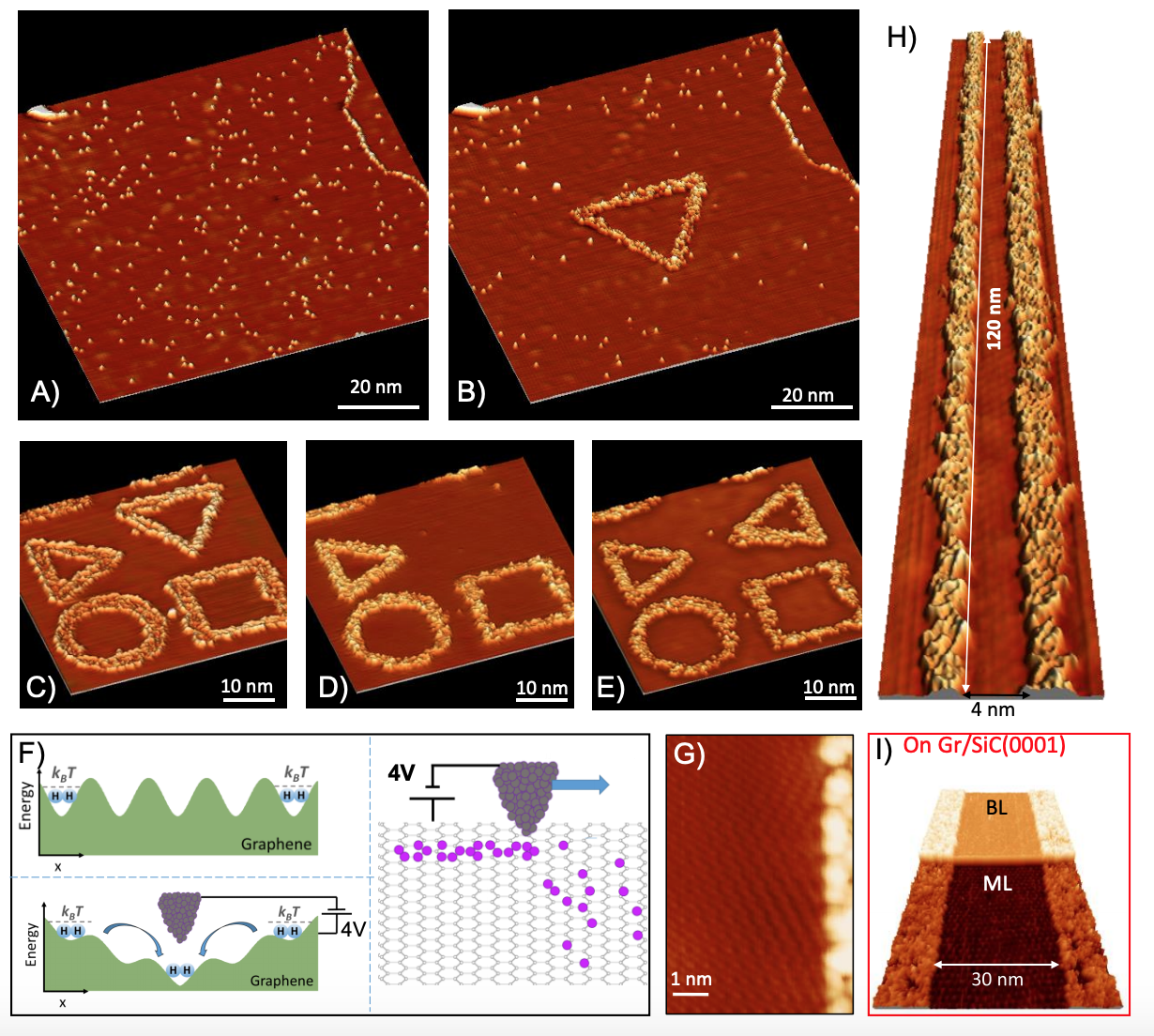
Atomic bricks to stop graphene’s ultrarelativistic quantum particles
June 26, 2020
How does the unstoppable stop?
A team of scientists, from the Universidad Autonoma de Madrid, Université Grenoble Alpes, INL – International Iberian Nanotechnology Laboratory (Joaquín Rossier), and Aalto University, has managed to solve this chimerical challenge using atomic bricks to build walls capable of stopping the ultra-relativistic electrons of graphene. This fact, in addition to the fascination that being able to experiment with ultra-relativistic quantum particles produces, has a fundamental applied relevance.
Being able to build walls capable of confining graphene electrons allows this material to be provided with a tunable electronic gap, something key to enable its integration into real electronic devices.
Electrons are subatomic particles responsible for the transport of electricity. When circulating in graphene, electrons behave like ultra-relativistic quantum particles. This is due to the peculiar arrangement, in a honeycomb structure, of the carbon atoms composing this purely two-dimensional material. Therefore, the rules that govern the behaviour of electrons in graphene are very special.
They must simultaneously obey the laws of quantum mechanics (necessary for objects of very small sizes) and those of ultra-relativistic physics (necessary for objects of negligible mass moving at speeds close to the speed of light). This gives rise, for example, to what is known as the Klein paradox, which implies that these electrons can only be stopped by atomically abrupt walls. Otherwise, the electrons impacting in certain directions would cross these walls regardless of their thickness or height.
This unique property means that electrons can circulate freely through graphene, is barely affected by the impurities that may exist in it, which makes this material exceptional for its use in electronic devices. However, so much freedom of movement comes at a price; it is in turn extremely complex to contain the movement of these electrons. This has hitherto prevented the use of quantum confinement of graphene’s electrons to reach the long-sought goal of a tunable graphene’s electronic gap.
The work, published this week in Advanced Materials, shows how an international team of researchers has been able to collectively manipulate a large number of hydrogen atoms to create impenetrable walls for graphene electrons. In their experiments, carried out at the Universidad Autonoma de Madrid with a scanning tunneling microscope, they have used these walls to construct, with subnanometric precision, graphene nanostructures of arbitrarily complex shapes, with dimensions ranging from two nanometers to one micron.
The developed method allows to erase and rebuild the nanostructures at will and can be implemented in different types of graphene. The experiments, supported by theoretical calculations, show that the created nanostructures are capable of perfectly confining the graphene electrons. In this way, the researchers have managed to overcome the pressing challenge of opening an electronic gap in graphene with a tunable value, which can be defined by the size and shape of the created nanostructures.
Also, the method opens up a plethora of exciting new possibilities, as the created nanostructures behave like graphene quantum dots that can be selectively coupled, allowing them to be used in quantum simulators to deepen our understanding of quantum matter.
The scientific paper can be accessed here.



